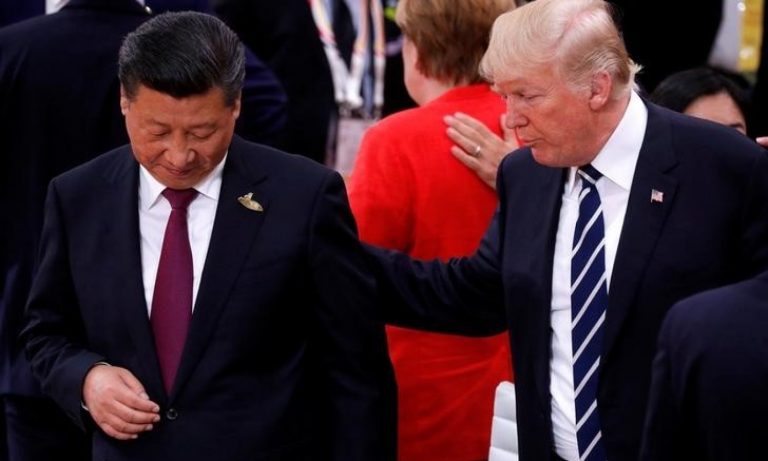
Feb 18
Donald Trump certainly seems intent on reigniting old rivalries with China and Russia after he fired salvoes attacking the countries on an economic, political, military and ideological level not seen since the fall of the Soviet Union.
In several recent policy statements – the state-of-the-union address, the national defense strategy, the national security strategy and nuclear posture review – the US president has suggested that China, along with Russia, are major rivals, which, together with rogue regimes and terrorist organs, “challenge US economy, interests and values”. In confronting these dangers, “unmatched power” is the surest means.
The latest rhetoric, contrasting with the usually more collaborative approach of every US president since Nixon, came after the roller-coaster ride in relations during his first year as president. Trump pivoted from a China-bashing inaugural speech and accusations of Chinese of hacking and the theft of American jobs, to “panda hug” tactics with President Xi Jinping, having cultivated “bromance” with “great chemistry” during their meetings in April and November. Now, it’s back to Trump the Belligerent after he became the first US president to specifically define China as “rival” since Richard Nixon’s ice-breaking trip to China in 1971.
Trump has signaled Washington is prepared for a full-blown trade war between the world’s biggest trading partners by slapping a punitive tariff on Chinese imports last month and considering a bigger fine over China’s alleged theft of intellectual property. Since he came to office, Trump has challenged China’s claims in the South China Sea, increased the US military presence in Australia, and deepened US military ties with other nations in a region he decided to term the Indo-Pacific.
There are reasons to believe the rivalry between the world’s most dominant superpower and its fastest rising one will continue to escalate.
First, is the failure to eliminate huge trade imbalance between the world’s two largest economies as the US trade deficit with China hit the record last year despite Trump labeling it as a top priority in relations.
Second, the competition for global influence is increasing amid China’s fast rise. In recent years, China has ramped up trade, aid, investments and soft power as it seeks to establish itself as a leader on the world stage. For instance, Washington sees China-led Asian Infrastructure Investment Bank (AIIB) and the “Belt and Road Initiative”, Beijing’s policy to expand global trade, as challenging the world order after the second world war, which is largely based on US-led Bretton Woods institutions.
Third, China’s increasingly assertive foreign policy amid escalating territorial and maritime disputes with its neighbors, such as Beijing’s effort to build and militarise disputed outposts in the South China Sea.
Fourth, the ideological conflict between the world’s leading free democracy and last major communist-ruled system, amid the revival of extremist Maoism in China and Beijing’s recent indication that it wants to export its authoritarian model. The US security strategy report warned that belief China could be turned into “benign actors and trustworthy partners” had been proved wrong.
Finally, Trump and Xi are both nationalistic leaders who seek to promote their own nation’s supremacy and superiority, Xi has his “Chinese dream” and Trump’s “American first” vision.
The first cold war featured a rivalry between the two worldwide blocs – the Soviet Union and its satellites and the democratic countries of the Western world under US leadership. However, the current US-China rivalry lacks the global support. Up to date, Trump’s cold war rhetoric does not receive reverberation from America’s traditional allies in the West, while China upholds the non-aligned policy and rejects aligning itself with Russia.
But to be sure, as Trump has officially declared China as an enemy, the state of resentful antagonism between Washington and Beijing will continue and their rivalry will only be intensifying in future.
South China Morning Post










